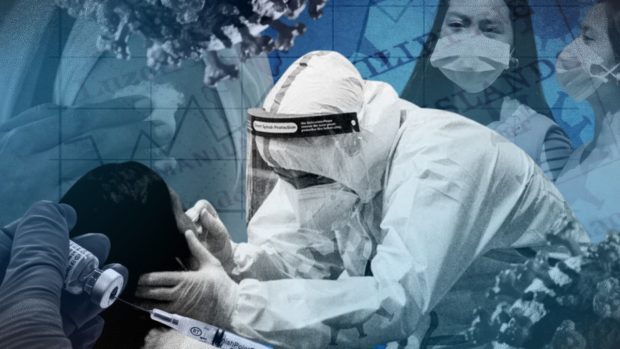
INQUIRER.net FILE PHOTO
MANILA, Philippines – The worst is over for the spate of COVID-19 infections in the country caused by the fast-spreading BA.4 and BA.5 sublineages of Omicron, an infectious disease expert said Thursday.
Dr. Rontgene Solante, in a televised briefing, listed reasons why the seven-day COVID-19 positivity rate in Metro Manila may have declined from 9.5 to 7.8 percent this week.
READ: COVID-19 positivity rate in NCR down to 7.8%, only 100 daily cases seen — OCTA
“We already passed the worst of the BA.5 and BA.4, so ibig sabihin nalagpasan na natin iyong tinatawag natin na wave so pababa na ang mga kaso (so that means we’ve passed the so-called wave as our cases have been decreasing),” he said during a Laging Handa briefing.
Solante also noted that the population had developed a form of immunity from COVID-19 infections.
“Na-develop na ang antibodies against BA.5 and doon naman sa kumpleto na ang bakuna at na-booster, tuloy-tuloy din ang proteksyon (We’ve developed antibodies against BA.5 and for those who have completed their vaccine and booster shots, they’re receiving continuous protection),” he added.
Solante said the dipping trend in COVID-19 cases also pulls down the country’s hospital and intensive care unit utilization rate.
But he pointed out that new offshoots of the BA.5 Omicron subvariant – BQ.1 and BQ.1.1 – are currently being monitored as cases brought about by these are slightly increasing in other countries.
With this threat of entry of new Omicron sublineages in the country, Solante reminded the public to get their COVID-19 vaccines and booster shots and remain adherent to public health and safety protocols despite the eased restrictions in the Philippines.
Undas aftermath
Following the nation’s observance of All Saints’ Day and All Souls’ Day or Undas, Solante noted that it might take a few more days to see if it may be deemed a superspreader event.
“We look at the manifestation at saka incubation ng infection, it’s usually between seven to 10 days from that superspreader event,” he explained.
Solante said the impact of the social gatherings over the Undas long weekend might reflect only by the second or third week of November.
With this, he said health authorities would closely watch the movement in the number of severe infections and hospital admissions. – Alyssa Joy Quevedo, trainee